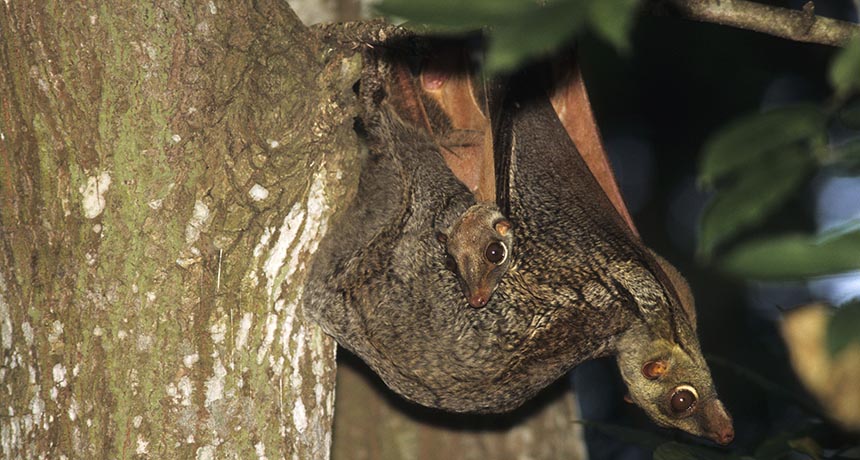Colugo genome reveals gliders as primate cousins

Primates may have some high-flying relatives. Colugos, small mammals that glide from treetop to treetop in forests throughout Southeast Asia, have an evolutionary history that’s long been debated. Their teeth look similar to tree shrews’ teeth, while other skull and genetic features resemble those of primates. (Past studies have even linked colugos to bats and other insect-eating mammals.)
In an effort to settle the debate, William Murphy, a geneticist at Texas A&M University in College Station, and colleagues have deciphered the genome of a male Sunda colugo (Galeopterus variegatus) from West Java, Indonesia. Comparing colugo DNA with 21 other mammal genomes, the team found that colugos are most closely related to primates, while tree shrews took different evolutionary paths to arrive at similar traits. There are also changes in genes related to vision and gliding that are unique to colugos, the researchers report August 10 in Science Advances.
Genetic data from colugos preserved in museums also show that the animals are more diverse than suspected. While only two species have been described in the wild, the team found at least seven separate genetic lineages, which may represent individual species.